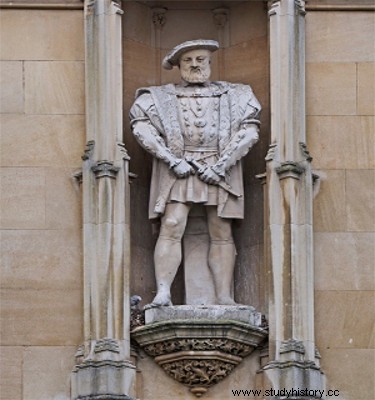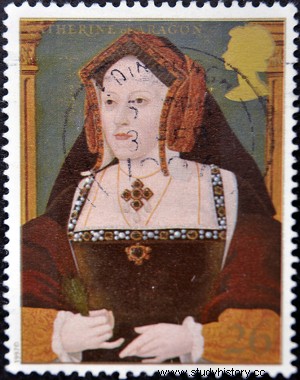
By Tales Pinto
The Religious Reformation was a process of opposition to the Catholic Church that took place in several regions of the European continent. We generally study three main cases of Religious Reformation in the 16th century:Lutheran, Calvinist and English (Anglican ).
Unlike the others, Religious Reform in England it came from the initiative of a king, and not from theologians critical of the doctrines and practices of the Catholic clergy. The reason why the English sovereign Henry VIII to leave the Church of Rome was the non-acceptance of his request for divorce sent to Pope Clement VI .
Henry VIII was married to Catherine of Aragon , nobleman of Spanish origin. The reason for the request would be the fact that his wife would not give him a son, a situation that made it impossible for the English yearling to leave a descendant of his in his place on the throne of England. Of Catherine's six children, only Princess Maria survived. Henry VIII's interest was to marry Anne Boleyn , a lady of the court of England, and with her to be able to have a son that would succeed him. As the pope's request was not accepted, the English king declared his divorce from the queen through a national court in 1533. A year later, Henry VIII was excommunicated by Clement VI.
However, it was not just the Pope's refusal to accept divorce that led Henry VIII to break with the Catholic Church. Political problems between England and Rome date back to the Hundred Years' War (1337-1453), when high Catholic dignitaries located in Avignon were closer to the French than to the English, during the so-called Western Schism. There were still serious criticisms of the Catholic clergy in England from at least the end of the 15th century, whose main exponent was John Wycliff . Such criticisms were both doctrinal and about the lavish behavior of Catholic clerics in times of economic poverty in English society.
After Henry VIII was excommunicated, the Act of Supremacy was enacted in England , whereby the English sovereign became the supreme head of the Church of England. With this measure, the so-called Anglican Church was created. . The English king now had the power to appoint the occupants of ecclesiastical positions, in addition to deciding on matters of a religious nature. The ecclesiastical structure was maintained, however, later adopting the theological doctrine developed by John Calvin.
In the economic aspect, the English State confiscated all the assets of the Catholic Church, mainly the lands of the monasteries, which were sold to various nobles, merchants and farmers. Such measures pleased the gentry , members of the gentry linked to trade and the economic activities of nascent capitalism.

Seal depicting Henry VIII's first wife, Catherine of Aragon.*
As an irony of events, Henry VIII was unable to have a son with Anne Boleyn. The couple's daughter, Elizabeth , would become queen years later. Anne Boleyn was accused of extramarital treason, convicted and beheaded in 1536. Henry VIII still married four more times, and in the third marriage he managed to have a son, Edward, who would succeed him. His fifth marriage also ended tragically, as his wife Catherine of Howard was also beheaded as a result of extramarital actions.
Anglicanism in England it would consolidate in England only with the reign of Elizabeth I (1558-1603), after her sister Maria Tudor tried to restore Catholicism in the kingdom.
* Image credit:Neftali and Shutterstok.com
Take the opportunity to check out our video lesson related to the subject:
